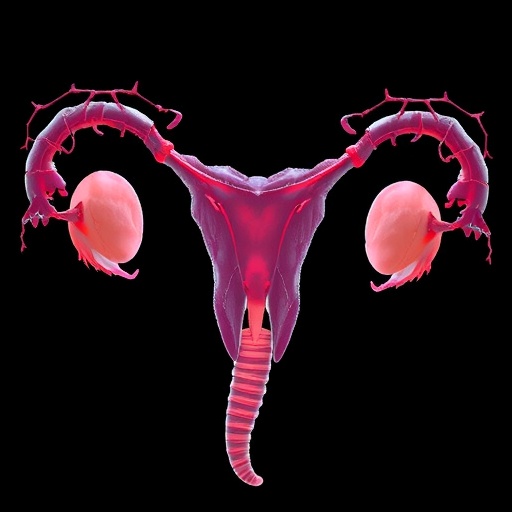In recent years, the landscape of reproductive science has experienced groundbreaking advancements, particularly with the quest for artificial uteri and the creation of artificial embryos. A recent study by researchers M.A. Filatov, I.P. Baikova, and D.M. Dolmatova delves into the uncharted territories within this fascinating domain. Their work, published in Reproductive Sciences, underscores the potential for innovation while illuminating the myriad technical challenges still requiring resolution.
The term ‘artificial uterus’ refers to a biomechanical replication of natural gestation, a concept once relegated to the realm of science fiction. With advancements in bioengineering and cell biology, the possibility of creating an external environment conducive to embryonic development is becoming tangible. The authors argue that this technology could address significant issues in reproductive health, including infertility and the medical conditions that complicate pregnancy.
At the heart of this inquiry lies the construction of artificial embryos, which entails a complex interplay of genetics, cellular biology, and biochemistry. Mimicking the intricate cellular interactions and tissue formation of natural embryonic development is no small feat. The authors explore various methodologies being employed to create these synthetic embryonic structures, ranging from stem cell manipulation to advanced polymer substrates that simulate uterine environments.
Furthermore, the paper raises critical ethical considerations surrounding the creation and potential use of artificial embryos. Asserting that the scientific capability to generate life-like entities imposes a moral obligation to govern their usage, the authors emphasize the necessity for robust ethical frameworks. These frameworks must align with societal values while promoting responsible scientific exploration.
One intriguing aspect of their work highlights the idea that artificial uteri could significantly broaden the scope of reproductive assistance. For example, they suggest that patients with compromised uterine conditions could still experience gestation through bioengineered solutions. Greater accessibility to reproductive capabilities could redefine family planning and childbearing, rendering it more inclusive for diverse populations.
Moreover, the researchers address the technical hurdles that must be overcome before such technologies can be widely adopted. These include enhancing the vascularization of artificial uteri to ensure proper nutrient and oxygen supply to developing embryos. The complexity of orchestrating a full-term development cycle in an artificial environment, alongside the challenges of maintaining a stable cellular climate, adds layers of difficulty to the research.
On a cellular level, the integration of artificial embryos requires a deep understanding of reproductive cellular dynamics. The authors detail the potential of using induced pluripotent stem cells (iPSCs) to create embryonic-like structures, as these cells can be driven to differentiate into various cell types required for embryogenesis. This approach holds promise but also poses questions about the resulting entities’ functionality and viability.
A further complication arises from the interaction between artificial embryos and the surrounding artificial uterus. Researchers must ensure that the synthetic uterus can provide all necessary physiological responses, such as hormonal fluctuations and immune adjustments that naturally occur in human pregnancy. This multi-faceted challenge creates an intriguing intersection between technology and biology, demanding interdisciplinary collaboration.
As this field progresses, continuous dialogue among scientists, ethicists, and the public becomes essential. Filatov and colleagues advocate for open conversations to foster a balanced view of the possibilities and dangers inherent in developing artificial reproductive technologies. By confronting uncomfortable truths and promoting transparency, a more informed approach to advanced reproductive science can emerge.
Despite the promise, the paper also outlines existing legal frameworks that may hinder progress. Many countries still operate under outdated reproductive health regulations, which often do not account for modern scientific advancements. Advocating for legal reforms will be crucial as scientists push the boundaries of what’s possible, ensuring that innovation does not outpace ethical considerations and societal norms.
One of the more futuristic implications of this research points to the possibility of creating embryos with genetic material sourced from non-traditional pairings or even entirely new genetic combinations. This raises profound questions about identity, family, and the ethics of genetic selection, highlighting the societal impacts these technologies could wield in the future.
Moreover, as artificial embryogenesis moves from theoretical to practical applications, overseeing its impact on existing systems of reproductive health will be critical. Current fertility treatments and adoption processes may require reevaluation as society adjusts to these innovative methods of reproduction. The dialogue surrounding these changes must be inclusive, recognizing diverse perspectives and the essential nature of human reproduction’s inherent complexity.
In conclusion, Filatov, Baikova, and Dolmatova’s research stands as a beacon illuminating the path forward in artificial reproductive technologies. While breathtaking in its potential, the quest for artificial uteri and embryos is fraught with unprecedented challenges that demand collaborative problem-solving, ethical scrutiny, and legal frameworks that evolve alongside scientific progress. As researchers embark on this journey, one thing remains clear: the future of reproductive science is replete with possibilities yet to be realized.
Subject of Research: Artificial Uterus and Artificial Embryos
Article Title: Artificial Uterus and Artificial Embryos: Unsolved Tasks
Article References:
Filatov, M.A., Baikova, I.P. & Dolmatova, D.M. Artificial Uterus and Artificial Embryos: Unsolved Tasks.
Reprod. Sci. (2025). https://doi.org/10.1007/s43032-025-01939-y
Image Credits: AI Generated
DOI: 10.1007/s43032-025-01939-y
Keywords: Artificial Uterus, Artificial Embryos, Reproductive Science, Bioengineering, Ethical Considerations, Stem Cells, Fertility, Cell Biology, Genetic Technologies, Interdisciplinary Research.




